7 Explosive Web Design Trends for 2025: High Conversion & Outstanding UX

Explore the 7 latest web design trends for 2025 to attract customers, increase conversion rates, and provide the best user experience. Stay updated to lead the way!
7 Top Web Design Trends for 2025

Welcome to the creative and innovative world of web design in 2025! In the context of continuous technological development, grasping the latest web design trends is a key factor in attracting and retaining customers. This article will introduce 7 leading web design trends, helping you improve user experience (UX) and increase conversion rates.
1. Minimalism Combined with Interactive Elements
Minimalism continues to assert its position in 2025. Instead of cramming in too much information, this trend focuses on simplicity, sophistication, and efficiency. By eliminating unnecessary elements, you can create an intuitive, easy-to-use interface that focuses attention on the most important content. The novelty of 2025 is the combination of minimalism and interactive elements such as animation, parallax scrolling, and subtle hover effects. These elements not only make the website more lively but also encourage users to interact and explore content.
Example: A sales website can use a minimalist design with a white background, black text, and high-quality product images. When a user hovers over an image, a small animation displays more detailed information about the product. This increases interaction and encourages users to make a purchase.
Benefits: Increases page loading speed, improves UX, easy navigation, increases conversion rate.
2. Personalizing User Experience Based on AI
AI technology is becoming increasingly intelligent and powerful, allowing us to personalize the user experience to an unprecedented degree. By collecting and analyzing data about user behavior, preferences, and needs, you can create websites that are “tailor-made” for each individual. For example, an e-commerce website can display recommended products based on a user's purchase and search history. A news website can customize the displayed content based on topics that the user is interested in. This helps increase user interaction, satisfaction, and loyalty.
Companies like Vinawebapp.com, experts in the field of web design in Da Nang, Vietnam, are actively using AI to personalize the user experience, bringing outstanding results to customers.
Benefits: Increases interaction, increases conversion rate, improves UX, increases customer loyalty.
3. Immersive Design with AR/VR
Virtual reality (VR) and augmented reality (AR) are gradually becoming essential tools for creating immersive experiences for users. By using VR/AR, you can take users into a virtual world where they can interact with your product or service in the most realistic way. For example, a real estate website can allow users to tour a virtual apartment through VR. A retail website can allow users to try on virtual clothes through AR. This helps increase user interaction, excitement, and memorability.
Benefits: Creates differentiation, increases interaction, increases memorability, increases conversion rate.
4. Prioritizing Sustainable Web Design and Environmental Friendliness
In the context of increasingly severe climate change, green web design is becoming an inevitable trend. Green web design is the design and development of websites to consume as little energy as possible. This includes optimizing images, videos, source code, and using environmentally friendly hosting services. In addition, the selection of appropriate fonts and colors also contributes to minimizing energy consumption. Green web design not only helps protect the environment but also improves page loading speed and user experience.
Benefits: Protects the environment, reduces energy costs, improves page loading speed, enhances brand reputation.
5. Applying Web 3.0 and Blockchain Technology
Web 3.0 and blockchain technology are opening up new opportunities for web design. Web 3.0 is a new generation of the internet that is decentralized, secure, and more transparent. Blockchain technology is the foundation for Web 3.0, allowing you to create decentralized applications (dApps) and manage data securely and transparently. For example, an e-commerce website can use blockchain to authenticate the origin of products and ensure transparency in transactions. A social networking website can use Web 3.0 to empower users to control their data.
Benefits: Increases security, increases transparency, empowers users, creates decentralized applications.
6. Designing Subtle Micro-Interactions to Attract Attention
Micro-interactions are small, subtle interactions that occur when a user interacts with a website or application. For example, a “Like” button can change color when a user clicks on it. A search bar can expand when a user starts typing. These micro-interactions are small but can make a big difference in the user experience. They make the website more lively, interesting, and engaging.
Benefits: Increases interaction, improves UX, creates excitement, guides users.
7. Focusing on Accessibility for All Users
Accessibility is the design of websites so that everyone, including people with disabilities, can use them. This includes providing alternative text for images, using high-contrast colors, and ensuring that the website can be navigated by keyboard. Accessible web design not only helps people with disabilities but also improves the user experience for everyone.
Vinawebapp.com always pays attention to accessibility features in the website design process, ensuring that all users can easily access and use the website.
Benefits: Increases reach, improves UX, demonstrates social responsibility, complies with laws.
Call to Action

Hopefully, this article has provided you with useful information about the 7 leading web design trends for 2025. Start applying these trends to your website today to improve user experience and increase conversion rates. If you need assistance, don't hesitate to contact web design experts at Vinawebapp.com for the best advice and support!

